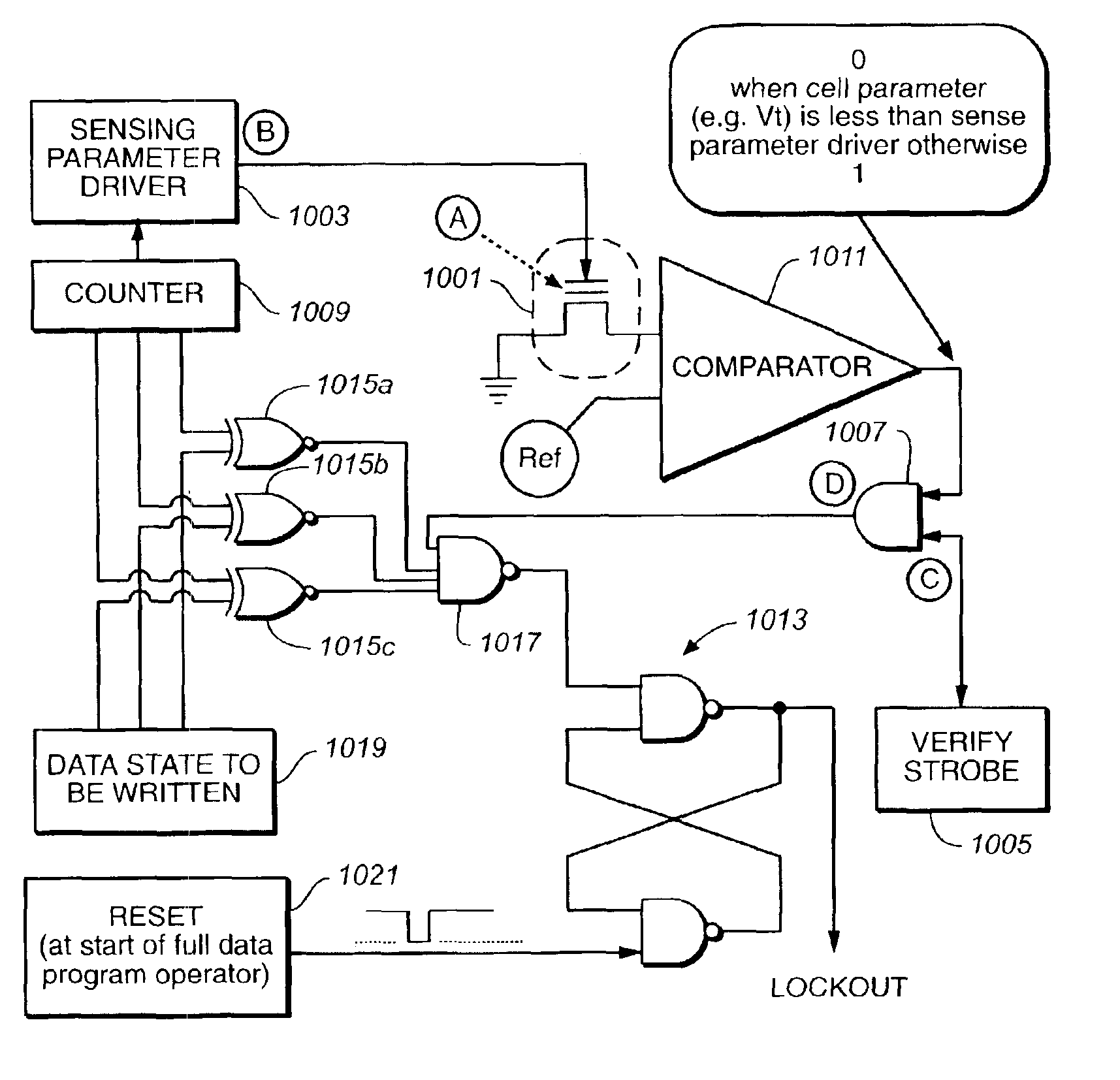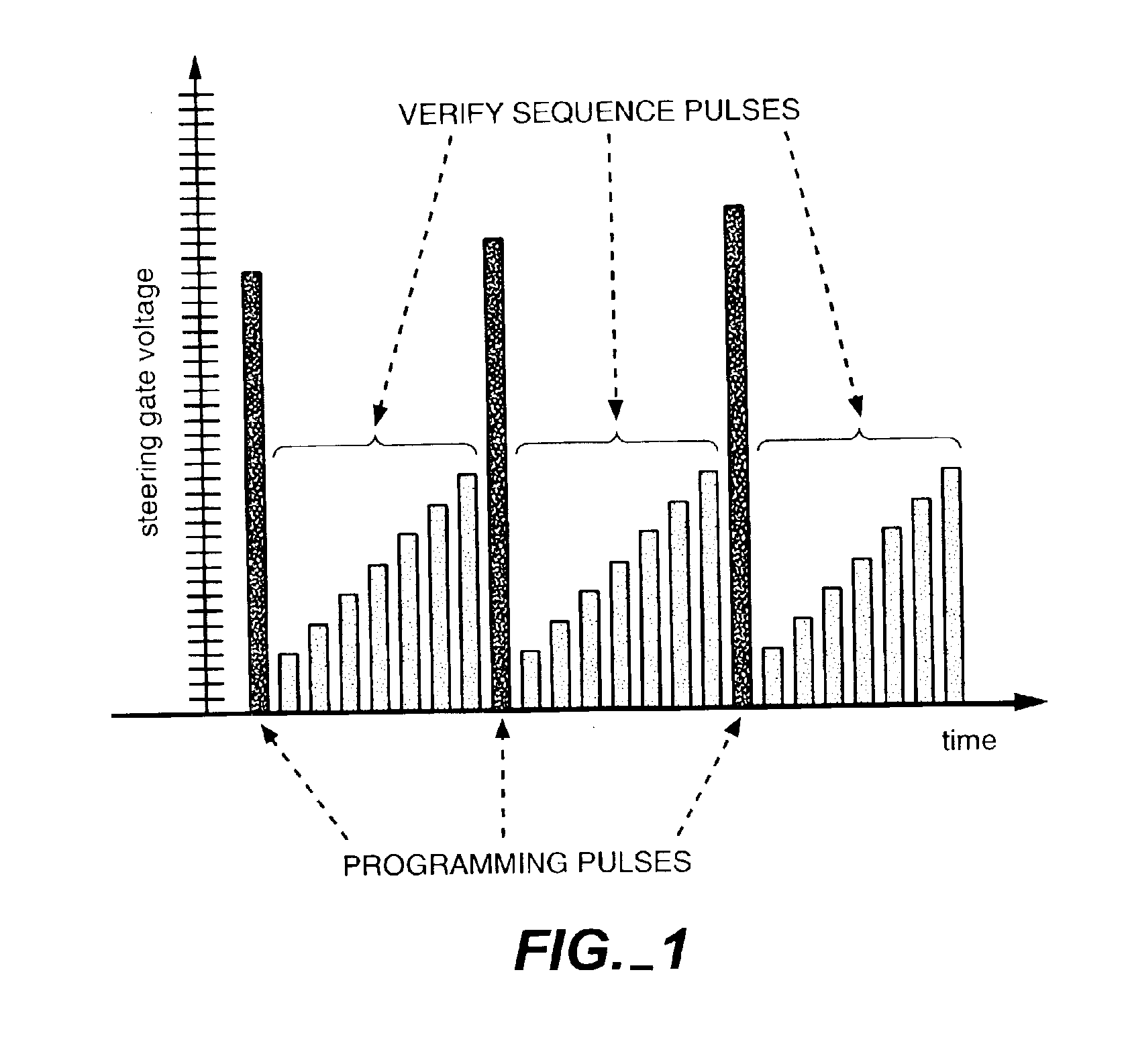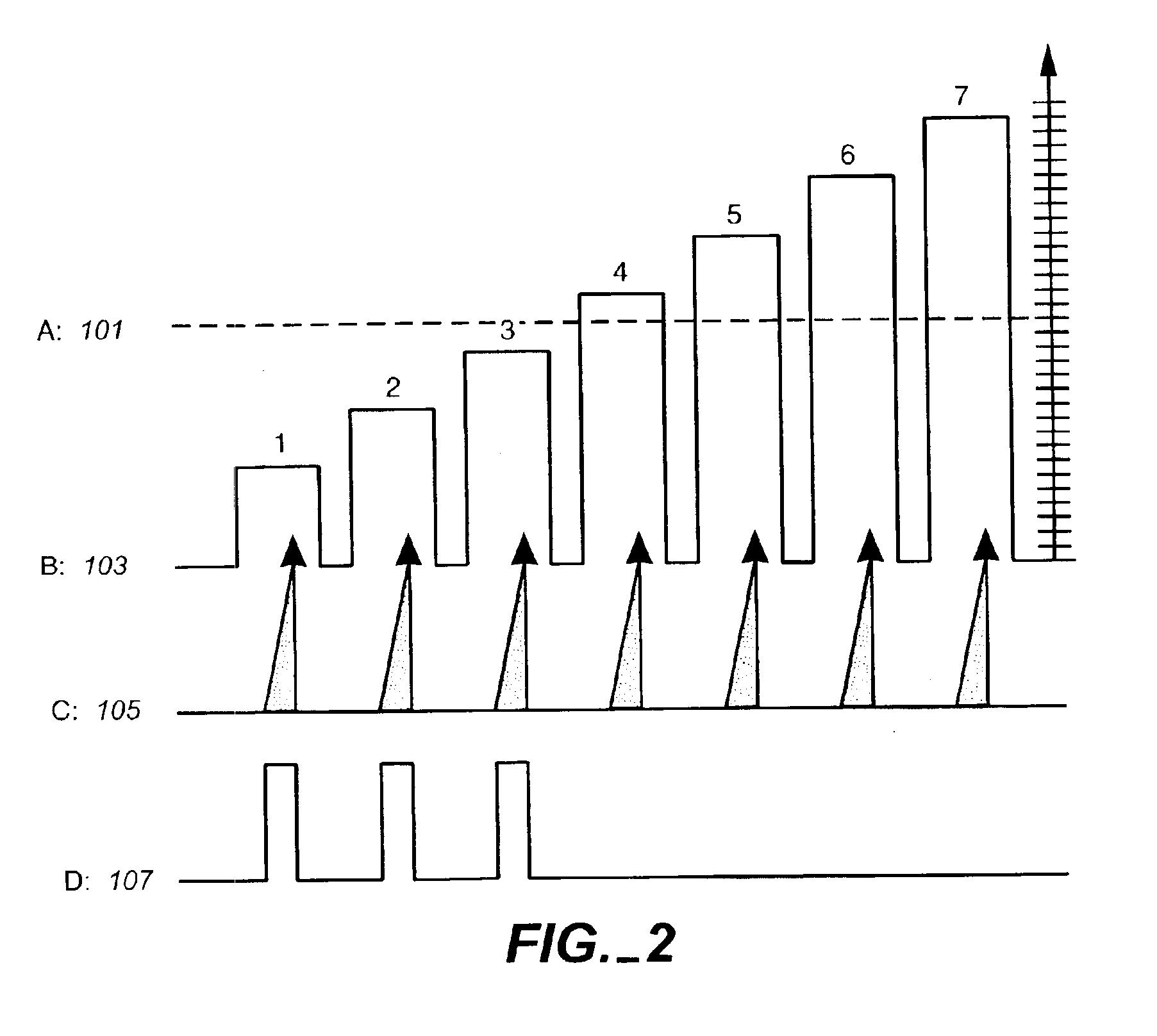Smart verify for multi-state memories
a multi-state memory and memory technology, applied in the field of program verification methods, can solve the problems of reducing the number of reads, wasting time, and affecting the accuracy of multi-state write operations, so as to increase multi-state write speed, and reduce the number of sequential verification operations.
- Summary
- Abstract
- Description
- Claims
- Application Information
AI Technical Summary
Benefits of technology
Problems solved by technology
Method used
Image
Examples
Embodiment Construction
[0035]The various aspects of the present invention are applicable to non-volatile memory systems in general. Although the description below, as well as that in the Background, is given mainly in terms of an EEPROM Flash memory embodiment, the particular type of storage unit used in the memory array is not a limitation to the present invention. The particulars of how the storage elements are read, are written, and store data do not enter in to the main aspects of the present invention and can be those of any of the various non-volatile and volatile systems which likewise us sequential verification through state conditions to perform the cell by cell verify / program terminate operation.
[0036]According to a principal aspect, the present invention uses verify-results-based dynamic adjustment of the multi-states verify range to establish a reliable, minimal time wasting multi-state write operation in sequential verification implementation. This provides a higher speed verify algorithm whi...
PUM
 Login to View More
Login to View More Abstract
Description
Claims
Application Information
 Login to View More
Login to View More - R&D
- Intellectual Property
- Life Sciences
- Materials
- Tech Scout
- Unparalleled Data Quality
- Higher Quality Content
- 60% Fewer Hallucinations
Browse by: Latest US Patents, China's latest patents, Technical Efficacy Thesaurus, Application Domain, Technology Topic, Popular Technical Reports.
© 2025 PatSnap. All rights reserved.Legal|Privacy policy|Modern Slavery Act Transparency Statement|Sitemap|About US| Contact US: help@patsnap.com



